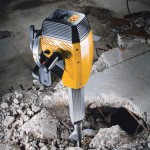If there’s electricity, there are likely a couple of cables in there as well. That also includes vehicles, which to my surprise, a lot of people neglect. When upgrading your stereo or installing accessories like LED lights to your truck for off-road riding, you should expect to be dealing with wires and cables in the installation process. Moreover, you’ll probably be best off getting car wiring accessories like a wire harness, cable assembly, wiring loom, etc.
A wire harness is one of the most popular car wiring accessories, and they’re practically an assembly of electrical wires or cables which transmit electrical power or signals. These accessories provide a couple of advantages over loose cables and wires. For instance, many automobiles would contain masses of wire which can stretch over a couple of kms if fully extended. By binding the cables and wires into a harness, they’re better secured against abrasions, vibrations and moisture.

By having the wires constricted into a bundle, the space used is optimized and the risks of a short circuit are significantly decreased. This also helps the installer, as he’ll have to deal with only a single harness as opposed to having to install multiple wires. With this the installation process is standarised and the installation time is decreased. If you want to further lower the risk of electrical fire, then you should bind the wires into flame-retardant sleeves.
When selecting a harness, there are a couple of things you should consider. First of all, consider how many circuits are needed. You can typically choose between 8 and 12 circuit harness for more basic applications like lights, horn, charging and ignition. However, for more complicated applications like air-conditioning and power options, then a 12 or 22 circuit harness is better suited.
And lastly, make sure the cable you’re purchasing is standarised by industry quality standard – IPC/WHMA-A-620. These standards are reviewed every three years, so make sure you’re up to date with the newest industry practices, technology and other issues that may have occurred after the last revisions. These industry standards issues like rework, repair, electrostatic discharge protection, preparation of wire, solder, cleanliness, crimping, hardware mounting, pull test requirements of crimps, overmolding, etc. The 620 standard is intended to provide the user with a quality product that will fit their intended needs.The 620 standard also covers three classes – general electronics products class, high performance/harsh environment electronic products and dedicated service electronic products.


